As an Amazon Associate I earn from qualifying purchases.
If you want a blood sausage recipe that’s approachable, this is the one. It is a Portuguese blood sausage that combines pork, pork fat and pork blood into a cohesive whole. I’ll walk you through how to make it.
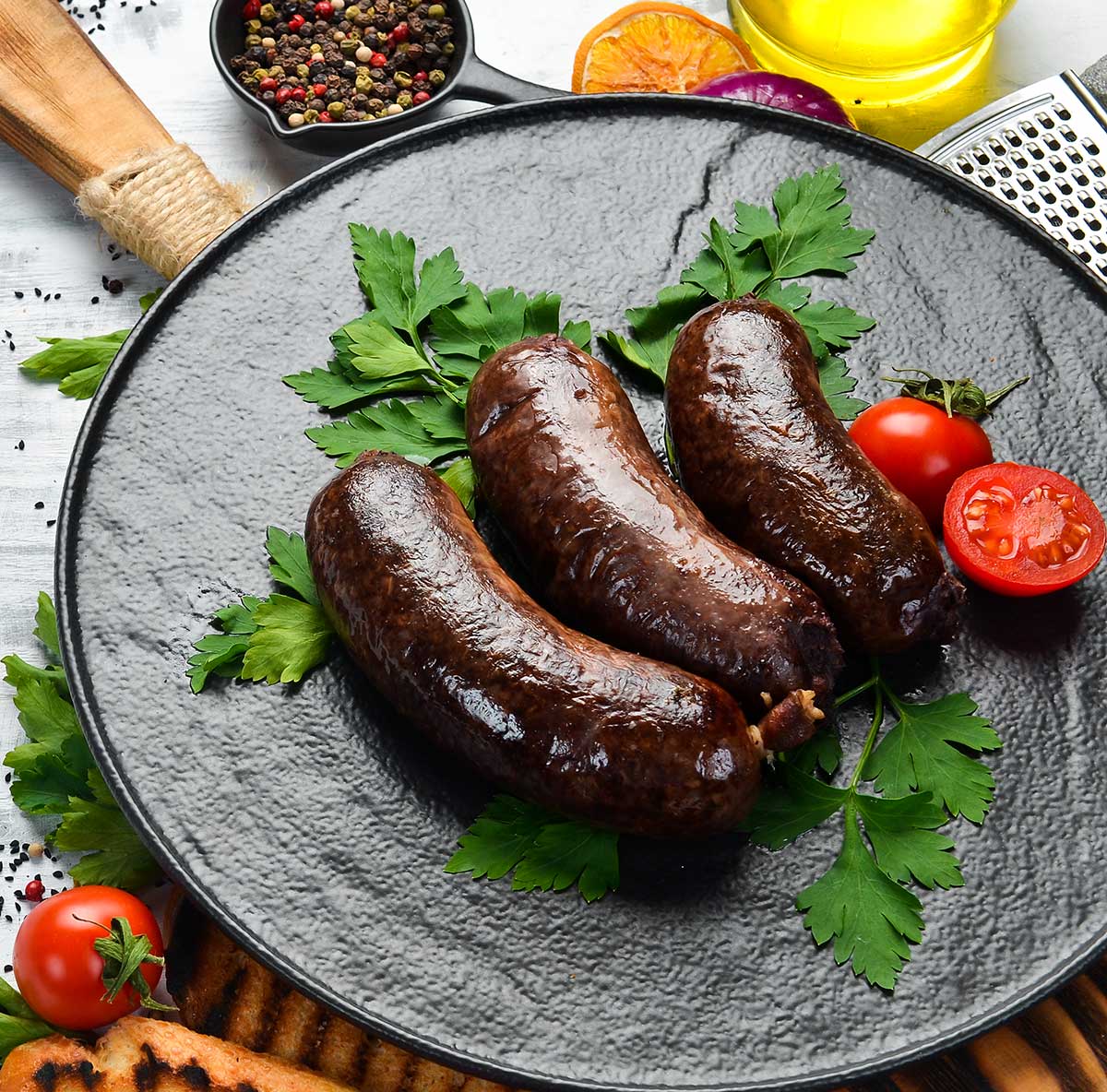
I’m from New Jersey, and much of what I learned about how to interact with others I learned from my stepfather Frank. Frank’s main rule was, “always have favors you can collect on, and don’t be afraid to do other people favors.” I do something for you, you return the favor — scratching each other’s back is a way of life. It’s how I roll.
So some years ago, when I drove down to Galt to collect a few hundred pounds of Touriga Nacional wine grapes from a Portuguese grower named Ron Silva, I wasn’t shocked when he told me not to worry about money. “No,” he said. “Instead, show me how to make blood sausage.” No problem, I said.
Blood sausage. Actually, Ron said “morcella.” I knew what he meant, although I refer to it mentally by its Spanish name morcilla. My neighbor from Argentina calls it more-SEE-zhuh, my other neighbor from Italy calls it sanguinaccio. Go to Louisiana or France and it’s boudin noir. But the first time I ate this odd delight was in South Africa, as part of a traditional English breakfast. And there it was stripped of any lyrical nicknames: The waiter called it “blood pudding.”
I know how to make blood sausage, but until I developed this recipe I had limited success. Many versions are blood and seasonings and that’s it — they are brutal to stuff into casings and were the source of failure whenever I’d been around the process in the past. Besides, to my palate, the blood-only sausages were a bit too cakey; more blood cake and less sausage. They have a weird mouthfeel.
I know. Many of you are saying to yourselves, blood. As an ingredient. In food that you’d eat. I know I glossed over it in the first few graphs of this post, but if you are still reading I thought I’d stop to tell you that first, there is quite a bit of nutrition in blood (especially iron and other minerals), and the addition of blood in a dish will make it seem fattier and richer than it really is.
(Pork blood also makes a great pasta, believe it or not!)
Pork blood will solidify and stay moist, while beef blood becomes crumbly and dry — one more reason why the pig is God’s Gift. And blood is cheap, so if you are on a budget think about it. Finally, blood is also a spectacular binder, much like egg whites. Herein lies the secret to my morcilla.
My blood sausage is bound with blood rather than a pure blood sausage. It has pork shoulder and pork fat, parsley, onions and lots of ground bay leaves.
I woke up early on a Saturday, drove down to the Davis farmer’s market and picked up some pork blood, as well as a big slab of pork shoulder. I was eager to repay Ron for the wine grapes — not because I wanted to get it over with, but because I enjoy the interplay of favors that my world once revolved around. This is a life bound more closely to other people than is that lived by those who follow the principle of “neither a borrower nor a lender be.”
I also enjoy teaching others some of the more esoteric things I’ve learned in my travels. (Thus this blog.)
Incidentally, when you want to make blood sausage yourself, you will find the blood in Asian markets, usually frozen. Or ask a local butcher to get it for you. It might take a week or so, but you can definitely buy pork blood in the United States.
When Ron and his wife Kathy arrived, I learned that Ron is a total morcella hound. “Morcella, morcella, morcella,” Kathy said. “When we were in the Azores, we’d go to Michelin-starred restaurants and he’d find the morcella.”
I think Ron was hoping I’d make more than five pounds, as he is a hearty eater. But all my recipes are about five pounds, and blood sausage is so rich non-farmers typically can’t eat too much at a sitting. But Ron was OK with it: I was teaching him to fish at the same time I was giving him some. At any rate, he watched the process intently.
Morcilla is an odd sausage to make. Instead of a solid bind that you want with a normal sausage, you pour in enough blood to make a loose slurry. It looks like the leftovers from a field hospital during the World War I.
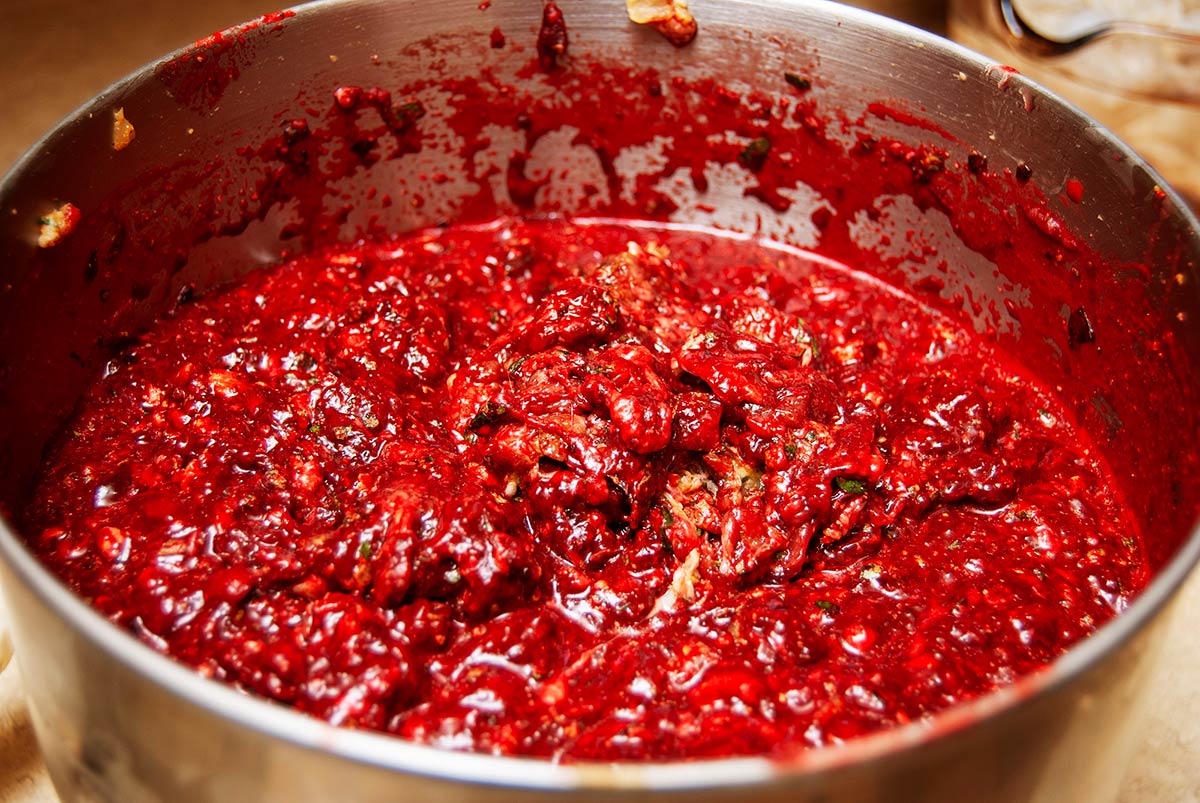
At least the slurry is solid enough that I can use a regular sausage-stuffer to form the links, although you must tie off those links with string; they are too loose to hold if you just twist them like a regular sausage.
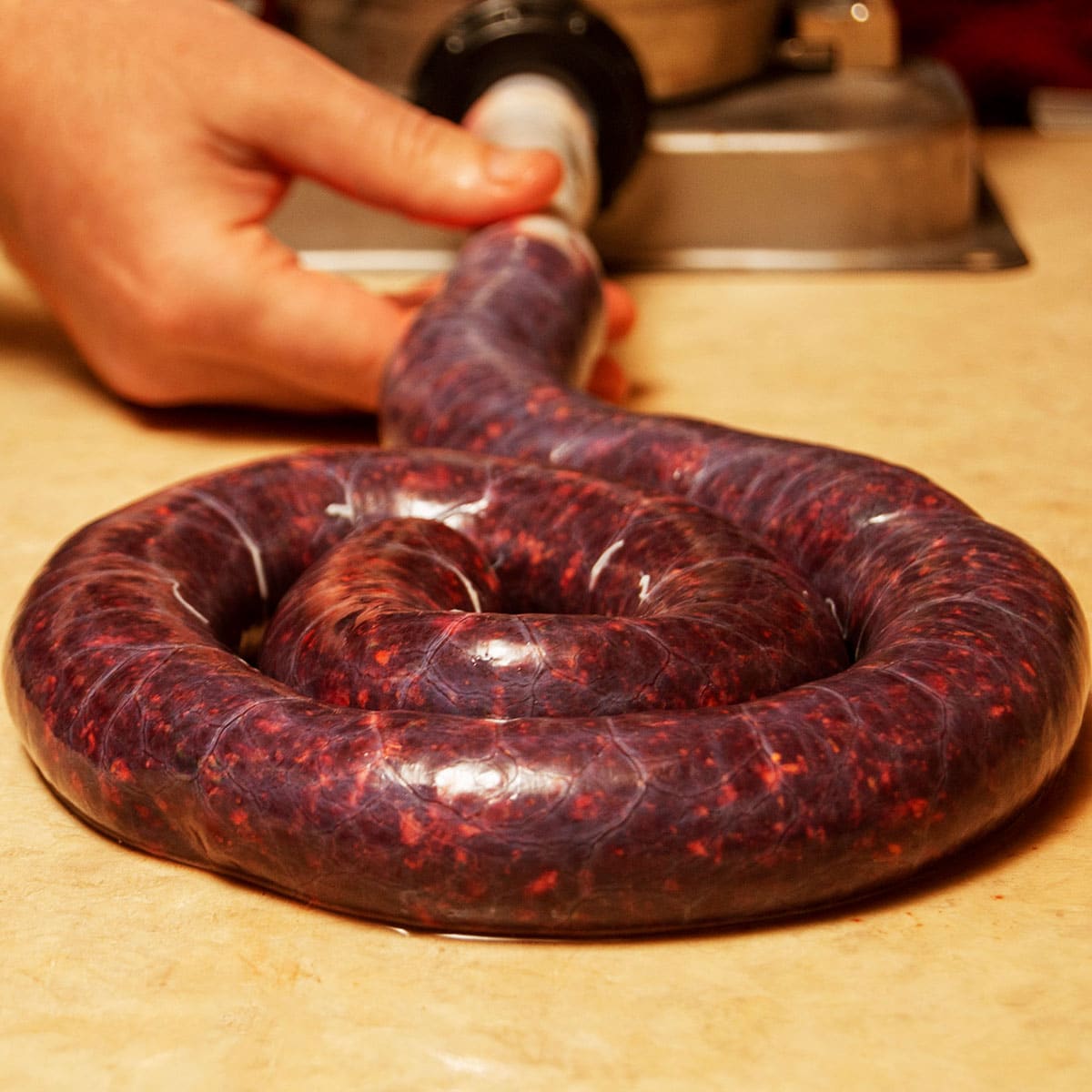
Another step you need to take is to poach the raw blood sausage in 170°F water. Not a simmer, and definitely not a boil (the blood will curdle. Ew.), but hot enough to solidify the blood to make a firm sausage.
After the poaching, you can then do what you want. I smoked mine over almond wood at 200°F for a couple hours, but you can then fry them, grill them, drop a few into a soup — whatever.
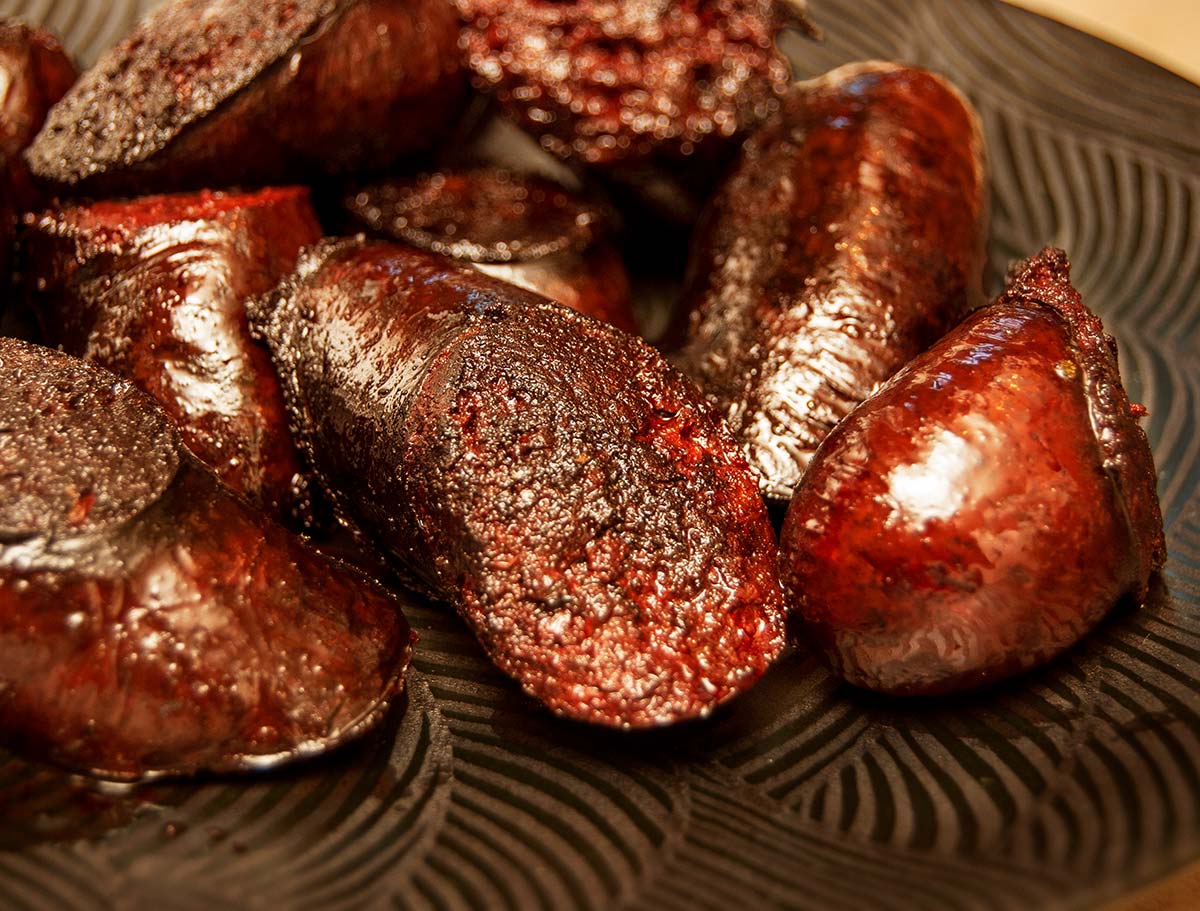
They are delicious: Softer than a regular sausage but still meaty, with a taste you can only really describe as “dark.” You know there is blood in there, but you can also pick up the pork and onions and the bay leaves. The fresh parsley brightens the whole affair enough that you don’t feel awkward eating them on a sunny day.
New to making sausage? You can find my detailed tutorial on how to make sausages at home here.
Portuguese Blood Sausage
Ingredients
- 1 quart pork blood (probably 1/2 gallon)
- 3 pounds pork shoulder
- 1/2 pound pork fat
- 2 cups chopped onions
- 1/4 cup duck fat or fresh lard
- 36 grams kosher salt, about 3 tablespoons
- 6 grams Instacure No. 1, about 1/4 teaspoon (optional)
- 10 grams freshly ground black pepper, about a tablespoon
- 6 grams ground bay leaves, about a tablespoon
- 1/2 cup minced parsley
- 3 tablespoons sweet paprika
Instructions
- Freeze the pork fat. Cook the chopped onions in the duck fat or lard over medium-low heat until they are caramelized, about 15 to 20 minutes. Remove and cool them. I do this step the day before.
- Mix both salts, and the pepper, parsley, bay leaves and paprika. Cut the pork and fat into chunks and coat everything with the spice mix.
- Chill everything: bowls, grinder parts, sausage stuffer parts, and especially the meat, fat and blood. I put everything in the freezer for a few hours. You are looking for temperatures close to freezing.
- Take the hog casings out and put what you need in a bowl of warm water. Depending on their width, you’ll need 10 to 20 feet worth. Many places sell casings specifically to make 5-pound batches. Be sure to drape the end of each casing over the side of the bowl so you can find it later.
- Using the coarse die (6.5 mm), grind the meat and fat. If you wish, you can run everything a second time through a fine die. I don't. Make sure the meat and fat are at no warmer than 35°F when you grind. Put the meat and fat into the freezer and clean up.
- Fill the largest pot you own with water and heat it to steaming, but not boiling. Ideally you want something like 170°F.
- Meanwhile, attach the paddle to your KitchenAid or other mixer, or, alternately, get a stout wooden spoon. Take the meat and fat mixture out and add the cooked onions. Pour in about a pint of blood. Stir on Level 1 on the mixer or with the wooden spoon. Add some more blood as you go; it’s not an exact science. You want a loose slurry that is quasi-emulsified — a consistency like pancake batter. When it is the consistency you want, put the mix back in the fridge and clean up. Get your sausage-stuffer ready and thread a hog casing onto it.
- Pour the mix into the sausage stuffer and begin making your sausages. Make the whole coil before you tie them into links. This is a little tricky, and it helps to have a second person help. You need to tie off blood sausage with twine because it is very loose inside and twisted links will fall out. Repeat until you are done with all the sausage. Get the largest bowl you own and fill it 2/3 of the way up with ice and water.
- If you have some wooden dowels, use them to gently lower the sausages into the pot of hot water. Do one at a time. Let the sausages poach for 15 minutes and then place them in the ice water. When the sausages are cool, remove them gently and hang them to dry out for an hour or so. You can now smoke them, or cook in any way you’d like.
Notes
Nutrition
Nutrition information is automatically calculated, so should only be used as an approximation.

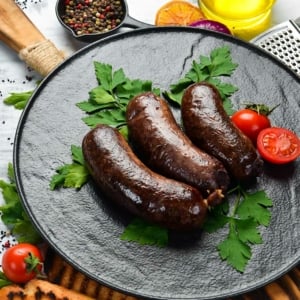

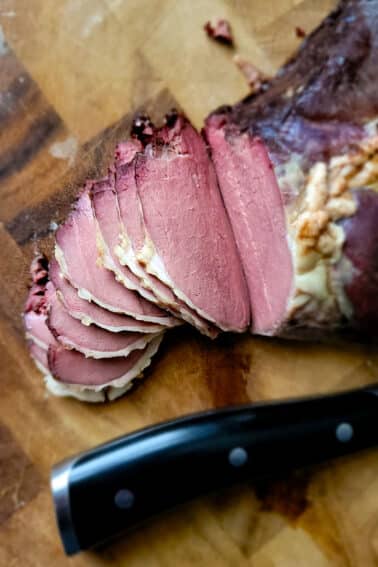
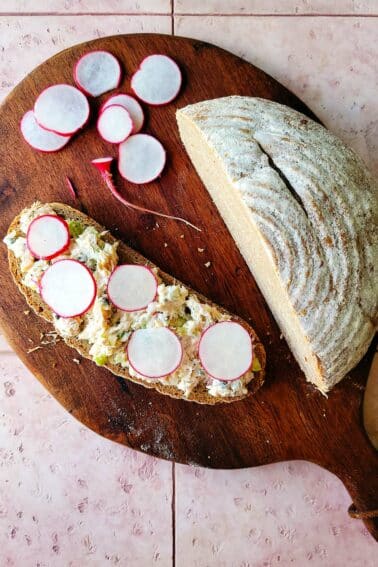

If I wanted to try and save the blood from a whitetail right after harvesting it what would I need to do to the blood
Keith: I’ve never tried it with deer, but normally you have a bowl with a little salt and/or vinegar in it, and you stir the blood into that constantly until combined; this helps prevent the blood from coagulating.
I saved blood from a deer last year and just cooked by itself it tasted exactly like the liver. I haven’t tried making the sausage yet but I’m sure it would be delicious
Hi, so is it true that if the blood coagulates, you can just give it a swirl in the blender and it’s fine? Alternatively, you said about a tbsp of vinegar per pint to keep it from coagulating, but does this change the flavor? How much salt would work? For the pork blood that you get in the store, do you know what they have done to keep it from coagulating? Thanks
Tanya: The pork blood in the store either has vinegar or salt or both, or sometimes citric acid.
Your method is almost exactly how I remember my great-uncle Herbert and father doing it when I was about 10 years old. (I am of German descent) I vividly remember the pig getting shot with a .22 to the head, lifting it onto the tailgate of the truck, and cutting its neck to collect the blood. I was told to keep stirring the blood so it would not coagulate. We had a big black cast iron cauldron (called the wash pot) built into a fireplace outside. After getting all the meat from the head and other pieces, they made the sausages and then dipped them into the hot water in the wash pot. I have always wanted to make blood sausage but never knew how till now. Thanks.
I can get a 5-gallon bucket of pigs’ blood, but it’s frozen. Will this still be ok to use in this recipe? If I thaw out the whole bucket can I still freeze it again, but in smaller containers?
If this doesn’t work, in 5 gallons should they be putting in vinegar? And how much vinegar? If it does coagulate can it still be used if it’s just mixed? Can I use frozen pigs blood once it’s thawed out and for future recipes?
For me , and returned to my butcher roots of 40yrs past .. I strain the blood through cheese cloth , then split the blood into two equal halves .. 1 half I add white and black pepper.. then congelle in a double boiler .. then ran through course grinder . Then more or less continued as ..
This was a very tasty sausage! I substituted elk for pork and it worked fine. I screwed up one thing though… Historically I’ve had a bag of blood that I poured in… This year I had a bag with a clotted cube in the middle. When I poured it into the mixture I thought it would dissolve but it didn’t. I broke it up as I was working it in but I ended up with blood clot sausage! The flavor was there but the texture was poor. I learned to always blend your blood first! It was very tasty and I’m going to buy the authors book because the two recipes I’ve made we’re delicious!
The best recipe for a nice dinner is morcilla and rice. Yet any blood sausage will do.
Blood is nutritious and tasty with the ingredients.
I have a question…
1 quart = 1 /4 gallon. Why does the recipe mention 1/2 gallon? I understand the conversions on the others, but liquid is liquid both are US measurements. Was there a conversion somewhere?
Followed your recipe but added spices like fresh cilantro, green onions, oregano leaves, garlic & chili flakes & cumin. Like how Mamita did. Didn’t have casings, so made patties instead.
Good evening. I can only hope to find powdered blood that is reconstituted with water. I am trying to revive a recipe that does not use fillers or cereals. Would the reconstituted blood solidify with simmering?
Joseph , I reconstitute dried .. in cold water then split the blood by volume, med plate mince/grind ice cold pork fat.. only seasoning , is Black , white pepper, salt coriander .. fill casing and simmer..hand and cool..
Hi
Doing this recipe today. Pig blood has coagulated but still able to strain it. I wonder if the strained blood will make a difference. After straining I added vinegar.
I will also add a bit of marjoram and nutmeg and chill powder
I will chop onion into 1/4” dice. Hope this is small enough.
I have a lay down stuffer so hopefully I won’t loose too much slurry when setting up.
I will also stuff 32mm skins and into individual rings and tie off. As such.
Looks good and will comment when Done
Thanks
Hank M
Ok, maybe I’m doing this wrong but every time I collect fresh wild pig blood it starts to coagulate immediately. My recipe from a friend in England tells me to “Stir with my hands while removing blood clots.” Ooookay, once I got past the EWWW factor, I followed the directions (causing a mess that made my outside kitchen look like a murder scene) and found that by the time I had removed all the clots I didn’t have enough to stuff the skins with! It also loses some of its consistency. What am I doing wrong? The Mr wants a bit of the original from his homeland.
Linnea: You have to stir in a bit of vinegar, usually about a tablespoon per pint. I hear salt also works, but I have not tried that trick.
Hank, if you had this first in South Africa I’m pretty sure they would have called it ‘black pudding’. Perhaps you misheard your waiter. That’s the name in the rest of the English-speaking world but not here where, for some peculiar reason, it’s called ‘blood pudding’. Who’d eat blood pudding when black pudding sounds so much more appetizing? There’s also a a white pudding, very popular in Scotland.
Thanks for the reply! Assuming there was enough clean blood to collect, could you add small amounts of vinegar to prevent it?
Luke: I am pretty sure that would work, but I’ve not done it in practice. It works with pig blood.
Hello Hank, one thing I’ve been curious about is using venison blood for culinary applications? Every heard of folks doing that? Or is there some safety issues with that?
Luke: Certainly doable. Just practically difficult. Hard to collect blood from a deer in the field and not have it set up and coagulate.
Is there a site to purchase this blood sausage.
Beverly: No. I make it at home. Sorry!
Could one get by with frozen mail-order blood? Embarrassed to say I’m having a real hard time finding fresh in agri/local friendly VT!!!
I am not sure if “frozen” blood will not have thawed when it arrives in your place. Instead, you may like to use blood powder (dried, similar to instant coffee) which one can get here https://mtg-gewuerze.de/blutpulver-getrocknetes-schweineblut.html as I do; hopefully, they will send it to your place. Just try, it’s worth it! The price is ridiculously low with regard to the turn-out: you mix 500gr of powder with 2,500gr water (= fivefold) and get 3,000gr of usable blood.
I haven’t cooked with blood ever but I have some questions. Is the blood you are buying at an Asian market coagulated? I’ve read that adding some vinegar to the blood and stirring it will keep it liquid but would that throw off this recipe? I’m going to buy a whole lamb this month and I’m assuming I should be allowed to collect the blood. How do you think lamb would do in this recipe?
Andrew: No. it’s not coagulated. And yes, a little salt and/or vinegar will do the trick with fresh blood. As for lamb, go for it! It’s done in lamb-eating places, but I personally have not done it.
Thanks for this recipe. I’m a big fan of morcilla since my days selling Spanish imported wines and cheeses and that one time on the Spanish Compostela de Santiago where breakfast was two delightfully cooked said sausages along with two fried eggs…and a glass of wine.
Hank,
Using your recipe as I guide, I made a 5# batch this morning. I improvised a bit and it turned out very nice. I kept the lean/fat ratio the same, but only had a quart of blood so the forcemeat was a bit thicker. I was able to link the sausage as a result. I substituted smoked paprika and added 1/2 tsp cayenne. The test patty was delicious. My wife didn’t hesitate when I handed her half. I have a wine racking session this weekend and plan to serve this at lunch, should be a hit. Thanks for sharing .